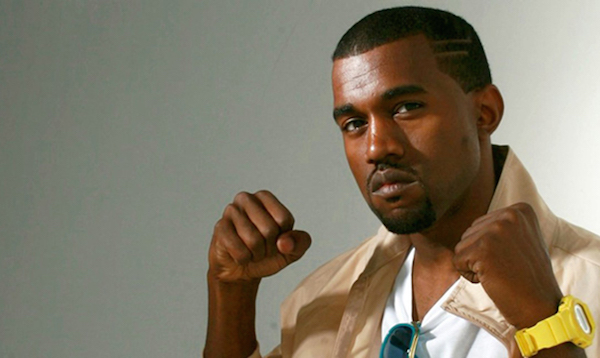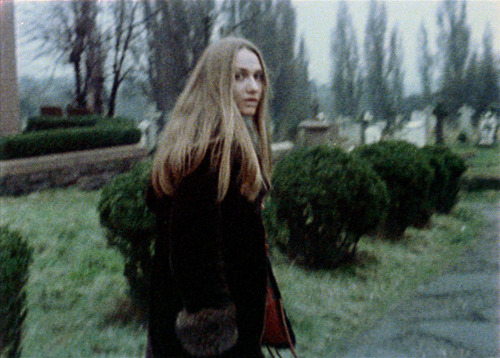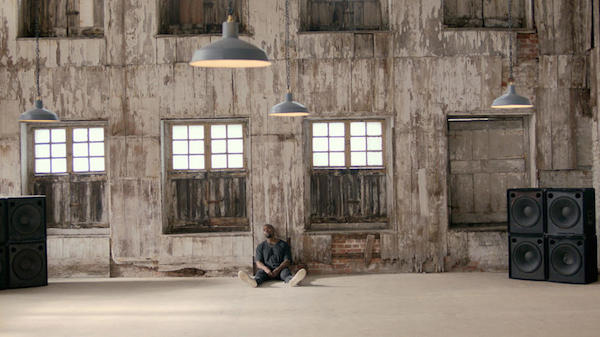Opinion
Kanye West’s Video With Steve McQueen Owes Much to John and Yoko’s ‘Rape’ Piece
The video for "All Day/I Feel Like That" gets the art treatment at LACMA. So what does it mean?

Photo via: XXL
The video for "All Day/I Feel Like That" gets the art treatment at LACMA. So what does it mean?

Ben Davis

As so often happens these days, the big art story of the moment is, in fact, really a celebrity story.
I’m talking about super-rapper Kanye West’s team-up with video art maestro-turned-Oscar-winner Steve McQueen for the new video, All Day/I Feel Like That. The resulting nine-minute opus, presented as a video installation, got a four-day run at the Los Angeles County Museum of Art (it closes today).
The official video is not yet for web consumption, but you can find a bootleg clip of it in situ at LACMA. It has the unblinking conceptual elegance for which McQueen’s pre-Hollywood video art was known, being essentially a single continuous shot of West exuberantly performing solo in an empty London warehouse.
What makes this more than the most basic of music-video premises is West’s relationship to the camera. Sometimes it swivels away from him, forcing him to chase it to center himself in the frame; sometimes it comes at him, forcing him to dodge.
As the rollicking All Day segues into the more morose I Feel Like That, the rapper sinks to the floor in seeming exhaustion, the camera still hovering over him, as if in a kind of triumph.
There is a precedent that comes to mind here. The relationship between camera and subject here calls to mind John Lennon/Yoko Ono’s Rape (1969), for which the duo had a cameraman pursue a young woman through the streets of London. At first she tries to engage the camera to find out what’s going on, then to escape it, and then at last, as it chases her into her apartment, she breaks down utterly.

Yoko Ono/John Lennon, Rape(1969)
Photo: Courtesy MoMA
Here is Ono’s written “score” for Rape: “A cameraman will chase a girl on a street with a camera persistently until he corners her in an alley, and, if possible, until she is in a falling position.”
And here is McQueen, explaining his intention at LACMA at a hype-building secret Q&A with LACMA director Michael Govan on Friday night: “I wanted to put the camera on him, and goad him, and exhaust him.”
The reference would be fitting: Rape has always been read as (among other things) John and Yoko’s art-film allegory of their own situation as media superstars being devoured by the press. Similarly, in McQueen’s All Day/I Feel Like That, Kanye’s tortured relationship to the camera can be read as allegory of his own famous battles with fame.

Still from All Day/I Feel Like That
Photo: ICONOCLAST TV, Marian Goodman Gallery, Thomas Dane Gallery. Film Still courtesy Steve McQueen
But the difference, of course, is also telling. Rape is morally unnerving: Ono and Lennon didn’t ask for their subject’s permission (though her sister, whom she calls at the end, was informed of what was going on in advance). The point of the film was to treat an anonymous member of the public as a celebrity, thereby producing the forced identification in the viewing public of how invasive and vicious modern media was.
All Day/I Feel Like That ditches all the more disturbing, truly sadistic aspects of the Ono/Lennon work. But in the process, it almost reverses its meaning: With Kanye at the center of attention, you are left with is a bit of “tortured genius” image-making—building an image rather than breaking it down.
To be honest, I have a soft spot for West’s megalomania (well on view during his Q&A with LACMA head Michael Govan last week). He gives you what you want from an artist better than most artists: an unshakable faith in the importance of art as a world-changing thing. Maybe only someone unencumbered by the burdens of having to work within the actual art world can believe in the power of art that much.
Still, in the end, the transformation of the camera-as-tormentor device between Ono/Lennon and West/McQueen probably says something about the evolving relationship between art and pop culture: then, art was the lever to critique Beatlemania; now, it is another tool to build up Yeezus worship.